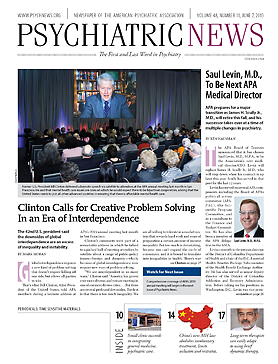Brief therapies are effective for a variety of disorders. Data also suggest that most therapy is in fact of short duration, not necessarily by design, but due to a range of factors, from patients getting the relief they needed to dropping-out due to a rupture in the therapeutic alliance. Can more therapy be brief by design?
Although more-recent training focuses on cognitive-behavioral therapy, there is a large pool (and still the majority?) of therapists who have been trained in “traditional” psychodynamic/psychoanalytical psychotherapy. Psychodynamic therapists attuned to long-term treatment may, however, easily adapt to planned brief work because brief psychodynamic therapy ues all the basic elements of long-term work. In fact, brief dynamic therapy is allied with long-term dynamic therapy just as lightning chess is allied with regular chess.
In both long-term and brief dynamic therapy, there is a common emphasis on the basics: a strong therapeutic alliance with attention to the frame and boundaries, resistance and defenses, transference and countertransference, interpretation, corrective emotional experiences, and termination.
The three phases also are the same, although sometimes named differently: the initial phase of alliance/engagement, the middle phase of working through/stage of discrepancy, and termination/consolidation.
There are some differences as well. Compared with patients in long-term therapy, patients who do best in brief therapy have less-severe pathology, good object relations, and can rapidly form a working alliance. The therapist in brief therapy needs to be more active and maintain a strict here-and-now focus. Brief therapy has a preset number of sessions of less than 24 or a duration of less than six months, and the focus is strictly limited to one or two areas of conflict.
Challenges in the initial phase (often as short as two to three sessions) revolve around selecting an appropriate patient and quickly forming a strong therapeutic alliance based on warmth and accurate empathy. Under time pressure, therapists sometimes force an alliance that may be experienced as artificial or controlling, leading to rupture. In complex patients with multiple pressing conflicts, it is usually a challenge to accurately pick the one (or at most two) issues that are most powerful and get agreement to make that the only focus of treatment.
Unlike with long-term therapy, it is helpful to give some “psychoeducation” such as, “We will work together over the next six months to resolve this important conflict in your life. In doing this, you will learn new skills and establish new patterns of behavior. Our work together will become the model for you to deal with other issues effectively on your own.”
If the therapist is a psychiatrist, there is often pressure to add medications, because many patients think that medications are more powerful, act quicker, and are “real” treatments. This becomes an important opportunity to build an informed collaboration by listening respectfully, educating the patient on the pros and cons of the options, and getting overt agreement after explaining the reason why you recommend brief dynamic therapy.
There are also challenges in the middle phase of working through/discrepancy. The majority of therapy in this phase is spent with the therapist dedicated to maintaining here-and-now attention on the single, agreed-upon focus. Distractions and resistance will conspire against remaining focused, which requires increased therapist vigilance and more active, skillful intervention. However, overly aggressive, too frequent interpretations without adequate preparation lead to poor outcomes. On the other hand, reminders and awareness of the finite nature of treatment lead to greater effort by both patient and therapist.
The termination/consolidation phase is often abbreviated to the last two to five sessions, with patients sensitive to separation and loss being at the higher end. The last sessions can also be spaced weeks to months apart to soften termination. Besides dealing with separation, the focus is on consolidation of gains. The patient is encouraged to recount changes that have occurred in thinking, emotions, and behavior, all in a relatively short period of time. The therapist conveys optimism that these new skills and behaviors are the springboard from which other conflicts will be dealt with successfully by the patient even after therapy ends.
Some patients may be offered “booster sessions”—that is, they can return for a session or two if they run into a crisis; others may be referred for long-term treatment.
From a personal perspective, it has been gratifying to “learn” to do brief dynamic therapy by design and add it to my mostly long-term dynamic practice. It is rewarding to be helpful in a brief period of time. Equally important, the tighter sessions and sustained focus required by brief therapy now influence my long-term work, which I think has improved. ■

